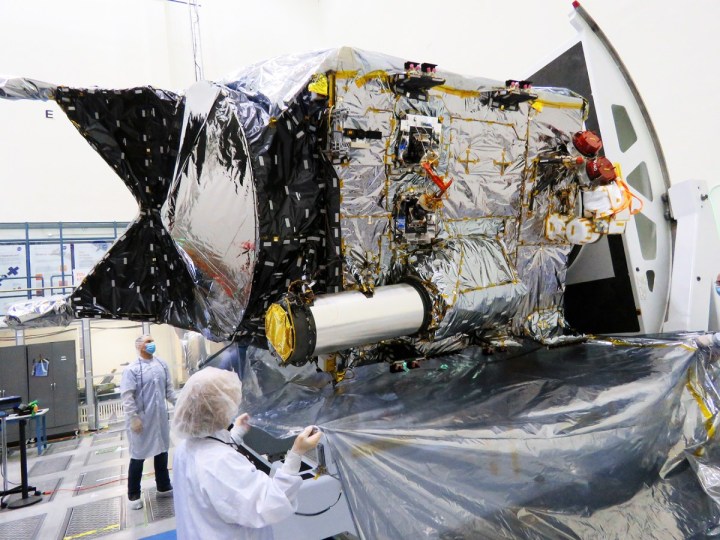The launch today of NASA’s Psyche mission to visit a metal asteroid will include an extra bonus, as the spacecraft will carry a test of a new communications system.
The Deep Space Optical Communications (DSOC) experiment will test out a laser-based communications system that could help NASA transmit more information from deep space missions, such as future missions to Mars.

NASA primarily communicates with its far-off spacecraft using a system called the Deep Space Network, which is a set of three sites in California, Spain, and Australia that have large communications dishes to detect signals sent from space. As these three sites are spaced out around the globe, it is always possible for at least one of them to detect a signal, no matter which direction Earth is facing.
It isn’t possible to make communications any faster, as signals travel at the speed of light which is a hard limit — so, for example, the communications delay of up to 20 minutes between Earth and Mars isn’t something that we’ll be able to fix any time soon. But there is another way to improve the existing network, which is to increase its bandwidth.
As there are more and more missions flying into space and the instruments they carry get more and more sophisticated, the total volume of data that needs to be transmitted grows. To accommodate that, communications need to be more to higher frequencies, which can transmit more data in the same amount of time.
That’s the idea for NASA’s ongoing upgrades to its Deep Space Network, which involve retrofitting the existing communications dishes here on Earth, which were designed for radio communications, to be able to handle laser communications as well. Compared to radio communications, laser (also known as optical) systems can carry up to ten times as much data.
As well as upgrading the equipment on the ground, however, the laser-based communications systems also need to be tested in space. NASA has been working on demonstration systems in orbit around Earth for several years, and now it will test the new system on a real mission: Psyche.
For the first two years of Psyche’s journey to the main asteroid belt, DSOC will test out the use of laser communications in a real deep space mission. Data will be collected by the 200-inch (5.1-meter) Hale Telescope at Caltech’s Palomar Observatory in California, testing out the system over distances of up to 240 million miles.
Editors' Recommendations
- These 3 companies are developing NASA’s new moon vehicle
- Meet NASA’s trio of mini moon rovers set to launch next year
- NASA switches SpaceX’s Crew-8 launch date again
- SpaceX has set a new date for Axiom-3 crewed rocket launch
- NASA’s Psyche spacecraft sends back its first image of a star field




